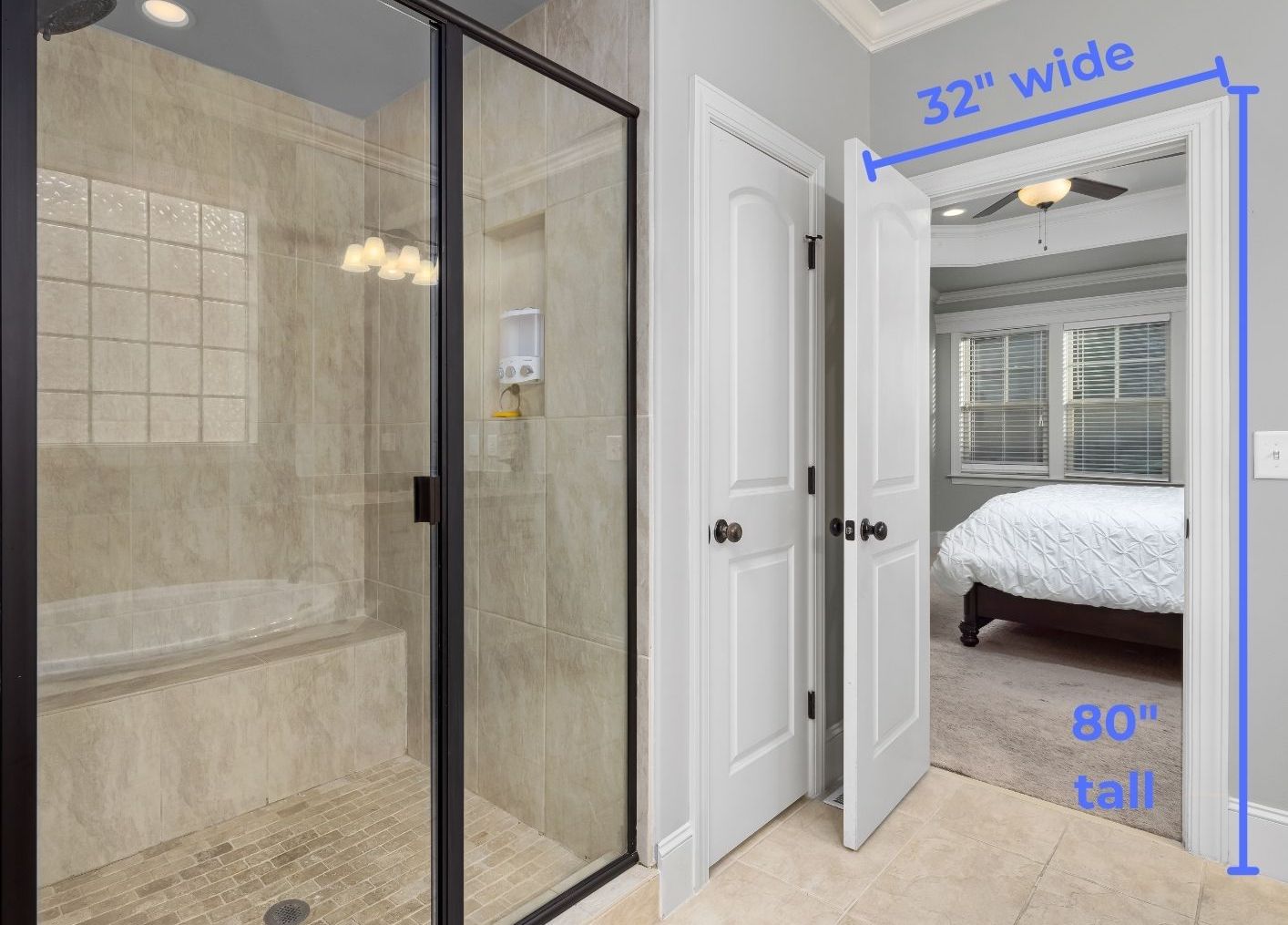Standard Bathroom Door Widths

The width of a bathroom door is a crucial factor in its functionality and aesthetics. Standard bathroom door widths vary depending on the type of door and the intended use.
Common Bathroom Door Widths
The following table summarizes the common widths for single, double, and pocket doors in bathrooms:
| Door Type | Width (inches) |
|---|---|
| Single Door | 24-32 |
| Double Door | 48-60 |
| Pocket Door | 24-32 |
Advantages and Disadvantages of Different Door Types
Each type of bathroom door offers distinct advantages and disadvantages:
Single Doors
Single doors are the most common type of bathroom door. They are typically the most affordable and require less space for installation. However, they may not be suitable for larger bathrooms or those with heavy foot traffic.
Double Doors
Double doors are ideal for large bathrooms or those with high traffic. They provide wider access and allow for greater privacy. However, they are more expensive and require more space for installation.
Pocket Doors
Pocket doors are a space-saving option that slide into the wall when opened. They are perfect for small bathrooms or those with limited space. However, they can be more complex to install and may not be suitable for all wall types.
Accessible Bathroom Door Widths
Accessible bathroom doors should meet specific guidelines to ensure easy access for individuals with disabilities.
The Americans with Disabilities Act (ADA) requires a minimum clear opening width of 32 inches for accessible bathroom doors.
This width allows for easy passage with wheelchairs and other mobility aids. It’s essential to consider these guidelines when designing or remodeling accessible bathrooms.
Factors Influencing Bathroom Door Width: Average Bathroom Door Width

Selecting the appropriate bathroom door width involves considering several factors that contribute to functionality, aesthetics, and compliance with building codes. These factors interact to create a harmonious balance between space optimization, accessibility, and visual appeal.
Space Constraints
The available space within the bathroom and the surrounding hallway significantly influences door width selection. Narrow hallways or limited bathroom space may necessitate a narrower door to accommodate furniture placement or traffic flow. Conversely, spacious bathrooms and hallways allow for wider doors, enhancing accessibility and creating a more expansive feel.
Design Aesthetics
Door width plays a role in the overall design aesthetic of the bathroom. Wider doors can contribute to a more contemporary and spacious feel, while narrower doors may be suitable for traditional or minimalist designs. The door’s material, finish, and style should complement the bathroom’s overall design theme.
Building Codes
Building codes establish minimum door width requirements for accessibility and safety. These codes ensure that doors are wide enough to accommodate wheelchairs, walkers, and other mobility devices, promoting inclusivity and ease of movement. For example, the Americans with Disabilities Act (ADA) requires a minimum clear opening width of 32 inches for doors in accessible bathrooms.
Door Swing Direction
The direction in which the door swings significantly impacts available space and the overall bathroom layout. Doors that swing inward can obstruct bathroom fixtures or reduce usable space, especially in smaller bathrooms. Conversely, outward-swinging doors can maximize usable space but may require more hallway space.
Hypothetical Bathroom Layout
Consider a hypothetical bathroom with a limited space. One configuration could feature a narrow door swinging inward, maximizing usable bathroom space while minimizing hallway space. Alternatively, a wider door swinging outward could enhance accessibility and create a more spacious feel, but may require a wider hallway.
Practical Considerations for Bathroom Door Width
The width of your bathroom door significantly impacts the overall functionality and usability of the space. Choosing the right door width is crucial for seamless movement, furniture placement, and accessibility.
Impact on Furniture Placement, Average bathroom door width
The width of your bathroom door directly influences the size and placement of furniture within the bathroom. A wider door allows for easier movement of larger items, such as a vanity or a bathtub, and provides more flexibility in furniture arrangement. A narrow door, on the other hand, restricts the size and placement of furniture, potentially leading to cramped spaces and limited functionality.
Average bathroom door width – The standard bathroom door width, usually around 32 inches, might feel a bit mundane. Why not break the mold and embrace a touch of the Wild West with saloon doors for bathroom ? These swinging doors, often wider than traditional ones, add a touch of rustic charm and create a unique entrance to your private sanctuary.
The average bathroom door width is around 32 inches, providing enough space for most people to comfortably enter and exit. But what happens when that door stubbornly refuses to stay shut? A jammed latch, a warped frame, or even a worn-out hinge can lead to the frustrating issue of a bathroom door that won’t stay closed.
If you’re facing this predicament, check out this comprehensive guide on bathroom door won’t stay closed for troubleshooting tips and repair solutions. With a few simple fixes, you can restore your bathroom door to its original state and ensure privacy and peace of mind.